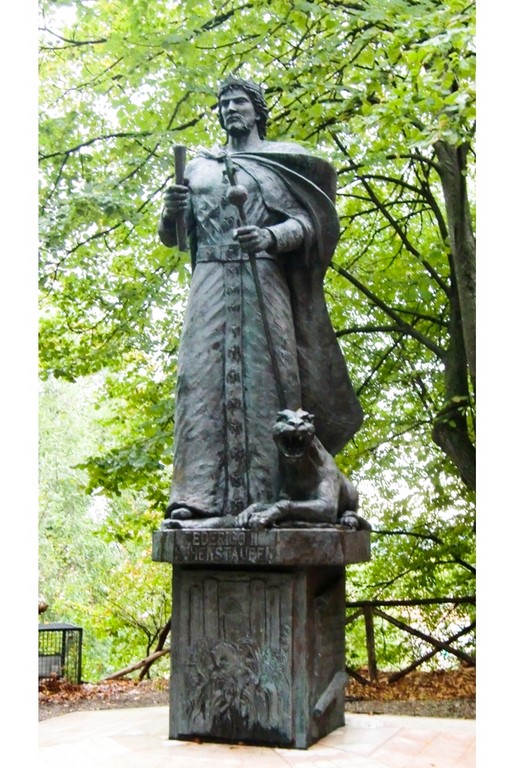Jesi - Sights and History
Sights

- The Piazza della Repubblica in Jesi is a lively square with historic buildings and a charming ambience that invites you to linger and enjoy.
- The Piazza Federico II is a picturesque place dedicated to the famous Staufer emperor and creates a historical atmosphere with its charming flair and surrounding buildings.
- The Jesi Cathedral impresses with its imposing architecture and houses valuable works of art that transport visitors to a bygone era.
- The Palazzo Pianetti, a magnificent Renaissance building, impresses with its elegant façade and ornate interiors that reflect the town's historical heritage.
- The well-preserved city walls of Jesi not only offer a fascinating view of the city, but also tell of its turbulent history and importance as a fortified settlement.
- The Teatro Pergolesi is a renowned theatre that offers a wide range of performances and delights visitors from all over the world with its unique atmosphere and acoustics.
- The Palazzo della Signoria is an impressive historical building in Piazza della Repubblica and a symbol of Jesi's urban power and cultural heritage.
- The Museo Federico II Stupor Mundi in Palazzo Ghislieri Nuovo is a modern and interactive museum that uses innovative multimedia presentations to inform visitors about the life and times of Frederick II and immerse them in the world of the Hohenstaufen emperor.
History
Jesi was founded by the ancient Umbrian people and later conquered by the Etruscans, who extended their rule to the Adriatic.
With the Battle of Sentinum in 295 BC, Rome finally defeated the Italic peoples and Jesi became a colony of Roman citizens. With the collapse of the Western Roman Empire, Jesi was included in the twelfth Byzantine province of the Mediterranean Pentapolis.
In the 4th century, the Gauls, barbarians from the north, occupied the southern border river Esino and made Jesi the last defensive stronghold against the Picenians.
In 756, Jesi was donated to the Church along with other towns. With Charlemagne's coronation as emperor in the 9th century, Jesi, although belonging to the Church, fell under imperial jurisdiction and became part of the new County of the Marches. In 999, Emperor Otto III gave eight counties to the Church, including that of Jesi. From this point on, the feudal structure of the town took shape. Around 1130, Jesi became a free municipality with its own autonomous government. The most interesting historical phase of the town followed, with the elaboration of the statutes, the construction of the Podestà Palace, the Town Hall and the Cathedral dedicated to Saint Settimio.
In 1194, in a square in the town, Emperor Frederick II of Swabia was born, granting Jesi the title of "royal town".
The crisis of the municipal institutions and the rise of powerful families such as the Malatesta, Braccio da Montone and Francesco Sforza ushered in the age of the Signorie. In 1447, Francesco Sforza gave Jesi to the Church and sold it to the Pope.
The end of the aristocratic period and the reorganisation of the municipal structure ushered in a great economic, demographic and, above all, architectural recovery of the city. New churches and palaces were built and the defence system strengthened. The Venetian painter Lorenzo Lotto created absolute masterpieces of art and spirituality for some of the city's churches. Federico de' Conti from Verona printed one of the earliest editions of the Divine Comedy in Jesi in 1472, and Ciccolino di Lucagnolo, a refined engraver and teacher of Benvenuto Cellini, developed and perfected the art of goldsmiths.
Towards the end of the 16th century, the local oligarchy, already firmly established as the landowning class, claimed all political and administrative power, which it retained until the second half of the 18th century. In 1797, Napoleonic troops ended both the nobility's monopoly and control over the surrounding countryside.
Two significant historical events of the 18th century are the architectural and urban transformation of the city and the birth of Giambattista Pergolesi and Gaspare Spontini, two important figures in the field of music who were recognised throughout Europe.